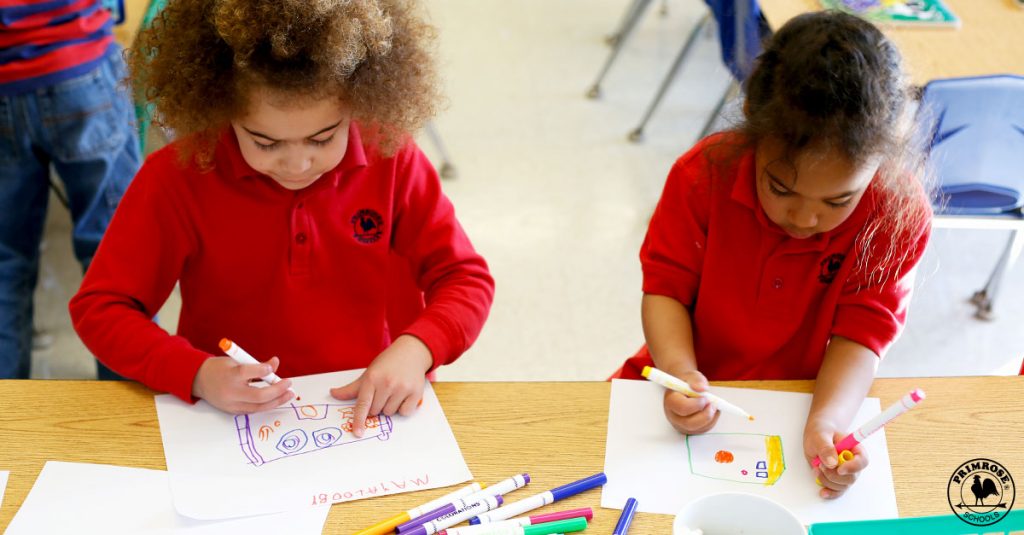how to explain what steam is to students
Lately, everyone seems to be talking about STEAM. It'due south a hot topic in the world of pedagogy and in the business customs, but what does STEAM have to do with your preschooler?
What is STEAM?
STEAM stands for science, technology, engineering science, fine art and math. You may recollect some of these subjects seem lofty for young children to grasp. In some ways, that'southward true. Young children may non be fix to understand multiplication or how computers piece of work. But, they tin build a strong foundation for future learning by exploring STEAM preschool skills and concepts through play and word, and then applying those skills through more play.
For immature children:
- Science encourages investigation and answering questions, often involving experimentation.
- Technology refers to using simple tools like crayons and rulers, as well as more complex ones like microscopes and computers.
- Engineering refers to recognizing problems and testing solutions.
- Arts encourage creativity and allow children to illustrate concepts they are learning.
- Mathematics deals with numbers, just too patterns, shapes, organizational skills and much more.

Why should young children acquire STEAM subjects?
They can be learned. Children take the power to larn foundational concepts in these subjects at a immature age. Preschools and other kid care providers should nurture STEAM skills and concepts early on and build on them through ongoing opportunities for play and discussion.
They are useful. The skills children acquire when engaging with STEAM concepts in preschool are transferable and useful beyond many aspects of their lives. For example, process skills, which include making observations, hypothesizing and critical thinking, are basic skills for math and science but are besides valuable skills for learning whatever subject.
They are in demand. Have you e'er thought near what your kid's life might exist like in 20 years? In some ways it is hard to imagine what career options children might have as adults. I thing is certain, skills in science, technology, technology and math volition be increasingly important. For early education providers like Primrose, office of our responsibility to children is preparing them for the realities they'll confront afterward in life.
What should STEAM expect similar for young children?
An important part of our approach at Primrose is introducing children to the right activities at the right times. We innovate children to new skills and concepts when they are developmentally ready, making learning fun and natural.
Science, technology, engineering, art and math are part of daily life. So it makes sense that children should explore these subjects in an integrated way every day through books, discussions, experiments, art projects, educational games and more. This method is far more than effective than limiting instruction of STEAM subjects or any subject to only certain times of the day or calendar week.
Find a School Near You
How can STEAM be nurtured at abode?
Look for ways STEAM concepts arise in everyday life and signal them out to your kid. Talk about how the seasons change while walking outdoors, where fruits and vegetables come from while grocery shopping, or the different colors that make up pictures in a book you read together. Asking questions is a slap-up way to encourage foundational STEAM skills. "Why do you think…?" questions spark investigation and disquisitional thinking, which are both crucial in grasping each element of STEAM. Fostering inventiveness through art or experimenting with fun science activities for kids are great ways to incorporate STEAM learning at domicile.
STEAM Boat Race Activeness (Ages 3 and up)
You also tin encourage STEAM learning through exploratory play at domicile! Children can channel their inner engineer with the boat race Home Learning Fun action beneath.
Materials Needed
- Cork
- Aluminum foil
- Tape (different types)
- Arts and crafts sticks
- Plastic straws
- Empty plastic yogurt cups and water bottles
- Old swim noodle
- Other recyclables
Instructions
- Work together as a family to gather recyclable materials like those listed above and pattern and build a few small boats out of the recyclables. It is besides important to think about where you lot might host your boat race – kitchen sink, pan full of water, bath tub at bath time, etc.
- Recall near which items may float, what you may need to hold the boat(s) together, etc. Ask questions of each other to make your materials selections.
- One time the boats are built, accept each family member, place the boats in a tub or pan full of water. Have him or her blow 'air current' toward the boats to run across how fast the creations travel.
- Claiming each family unit member to build a faster boat and race two of them by each bravado and/or pushing on different boats at the aforementioned time. Discuss which boat is faster and why.
As children engage with scientific discipline, technology, engineering, art and math, they are also edifice a strong foundation for learning in all subjects. With a little guidance from you and your child's teachers, your young explorer will develop a love of STEAM and learning for life. Visit a Primrose schoolhouse to see more than ways STEAM preschoolconcepts can be incorporated in your little one'southward daily routine. Notice a Schoolhouse
Find a Primrose Schoolhouse Near Yous
Inspire a lifelong beloved of learning. Contact your local Primrose to schedule a bout.
Find A School
Source: https://www.primroseschools.com/blog/understanding-steam-in-preschool-classrooms/